Popular games published by company Tec Toy
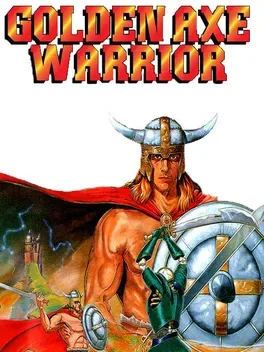
World peace is at stake! Death Adder, a wicked giant, has stolen the nine crystals from the kingdom of Firewood and has hidden them in nine labyrinths that he has created. These nine magic crystals protected the people from evil – especially from Death Adder's grasp. But now that the crystals are lost, the world is defenseless! Someone must put an end to the fiend's realm of darkness, death and destruction! Do you have what it takes to bring back peace and happiness? Trek through deep, dark forests and sail across vast, stormy seas. Chop down trees with your Battle Axe and move rocks with your magic spells to find secret caves. When you take on Death Adder's gruesome monsters, think only of winning – or else you won't find the nine crystals. And when you do, you'll find the Golden Axe – the only weapon that can crush Death Adder!
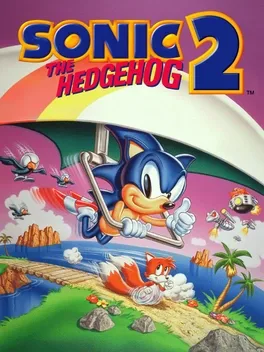
This is a completely different game than its 16-bit counterpart on the Genesis/Mega Drive, and was originally released on the Sega Game Gear and Master System. The Sonic the Hedgehog 2 game marks the debut of Miles ‘Tails’ Prower, Sonic’s best pal, who is then seen recurring in the series. Assist Sonic to rescue Tails, who has been kidnapped by Dr. Robotnik in this platform video game. In exchange of Tails’ safety in this Sega Game Gear video game, the evil scientist asks that the six Chaos Emeralds be given away to six robots, so he can dominate the entire globe. With advanced ability of Sonic to smash through walls and grab back scattered rings hit by enemy, this platform video game is made even more exciting. Join the protagonist in the Sonic the Hedgehog 2 game as he rides a mine cart, a hang glider or skims through water surface in his rescue attempt. With seven zones and three acts each, this Sega Game Gear video game is a rollercoaster ride where you get rewarded at the end of each act.
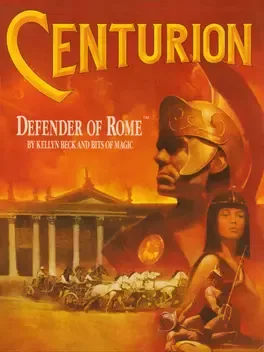
The year is 275 B.C. Through conquest and careful diplomacy, the Roman republic has brought the petty kingdoms and city-states of Italia under its control. This is the moment at which the heirs of Romulus and Remus step onto the world stage. This is the humble beginning of an empire that will one day cover most of Europe, Asia Minor, and North Africa. As an ambitious young officer, you duty is to defend Rome. Your hope is to become Caesar. Your fate - to rule the world.
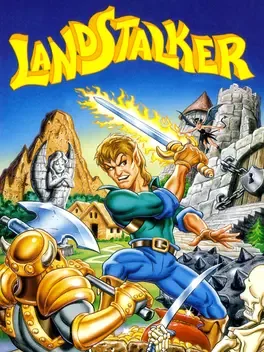
You are Nigel, an elf and treasure hunter extraordinaire. Assisted by his new partner Friday, Nigel will travel to a distant island in a search of a legendary treasure.
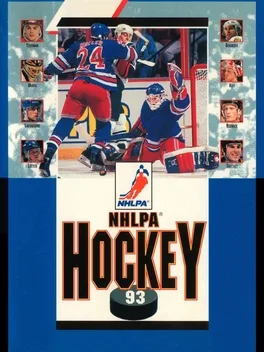
The second part in Electronic Arts' hockey series. It features the NHLPA license (so it has real player names), but not the NHL license (so it doesn't have NHL team names). Gameplay is altered only slightly over the predecessor. Regular season and Playoff modes are available. Goalies have improved AI, there are more foul play options and the game now features detailed statistics.
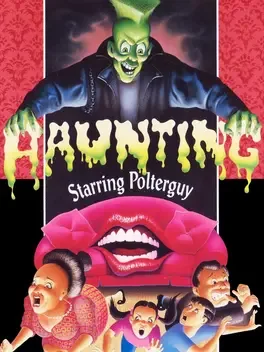
Scare the evil, greedy Sardinis out of their houses by turning everyday household objects into something scary, funny or just plain gross. Or use your special spells to really send 'em shrieking. But you gotta hurry, 'cause your ectoplasm may run out! 16 megs of cool graphics, gross special effects and blood-curdling sounds. Unique 3/4 view perspective. Over 400 scary, funny or gross fright items, each causing something different to happen. Five special spells: Zom-B-Ize, Supr-Scare, Boo-Doo, Ecto-Xtra and Dog-Off. "Killer" dungeon with 12 different paths!
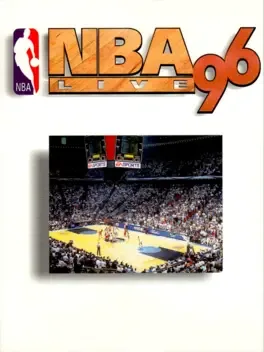
As with all games in the NBA Live series you can draft, trade and edit players. Play a full season, exhibition or just the playoffs. 96 includes 29 teams including the expansion Toronto and Vancouver teams.
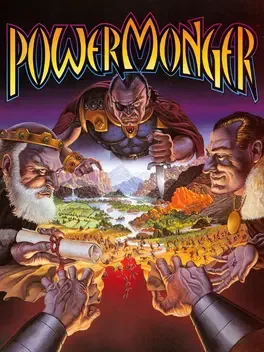
In a world without kings, power is the only law. No leader controls the destiny of this new world. Yet. Can you? Unite each territory by word or by sword or face bitter defeat at the hands of the other PowerMongers. Encounter a living world. Win the loyalty of farmers, shepherds, merchants, ranchers- even thieves. Hundreds of people with individual homes, jobs, and personalities. React to changing seasons. Store food for the winter- your soldiers won't take orders on an empty stomach.

Engage in airborne combat with jump-jets and weapons of incredible power or link up with your cyber cycle for high speed ground attacks. Each step inches you closer to your goal and the fight of your life. You are Ranger X... A mysterious lone warrior who has risen from the ashes to return peace and justice to a failed society. Eight post-apocalyptic levels of high-intensity action! Monstrous mechanical bosses await your every move. Use jump-jets to attack by air or transform into the Super Cyber Cycle and roll to victory!
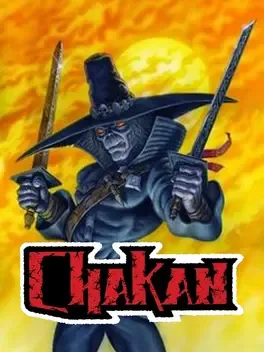
Chankan: The Forever Man was an Action Platformer for the Sega Megadrive/Genesis. The game featured an uncommonly dark premise for the time of its release, which saw the home console market flooded with licensed platformers based on family-friendly media. It is based upon a comic book by Robert A. Kraus and was produced by Ed Annunziata, who met Chakan's creator at a convention and was impressed.
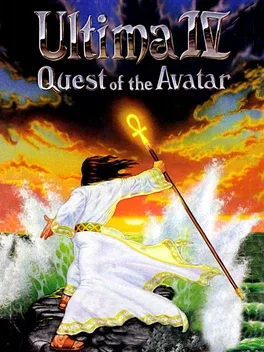
Following the defeat of the evil triad in the previous three Ultima games, the world of Sosaria changed beyond recognition: continents rose and sank, and new cities were built, heralding the advent of a different civilization. Unified by the reign of the benevolent monarch Lord British, the new world was renamed Britannia. Lord British wished to base people's well-being on the ethical principles of Truth, Love, and Courage, proclaiming the Eight Virtues (Honesty, Compassion, Valor, Justice, Sacrifice, Honor, Spirituality, and Humility) as the ideal everyone should strive for. The person who could accomplish full understanding and realization of these virtues would serve as a spiritual leader and a moral example for the inhabitants of Britannia; he alone would be able to obtain holy artifacts, descend into the Stygian Abyss, and access the Codex of Ultimate Wisdom. This person is the Avatar. The fourth game in the Ultima series features an improved game engine, with color graphics and enhanced character interaction: the player can have conversations with non-playable characters by typing names of various topics. However, the main difference between Ultima IV and its predecessors in the series (as well as other role-playing games) lies in the game's objectives and the ways to fulfill them. Instead of building up a character by any means possible in order to face a villain in the end of the game, in Ultima IV the player is trying to become the Avatar, a role model for people. This means upholding the Eight Virtues, basically trying to become a better person. Making morally conscious decisions and helping other people is not done expecting a material reward, but because it is the actual goal of the game and the main focus of its gameplay. The game frowns on behavior typical of most other RPGs, such as backstabbing fleeing enemies or picking up everything that isn't nailed down even if it does not belong to the protagonist. This different approach established the game's reputation as the first "true" Ultima, influencing the design philosophy of later installments and the overall spirit of the series. Character creation is done by choosing responses to morally ambiguous questions. Each of the Eight Virtues corresponds to a character class; by determining the player's personal priorities in the virtues, the game assigns a class and a starting location for the Avatar. After emerging in Britannia, the player is free to explore it in various ways (on foot, moongate teleportation, on horseback, by ship, etc.). Certain items must be collected in any order to enter the Stygian Abyss and complete the game. The Avatar also has to reach the highest level in all virtues. This is achieved by various means: donating blood increases Sacrifice, not fleeing from combat increases Valor, etc. The process, however, is not irreversible: should the Avatar overpay a blind seller, he gains Compassion points; should he, on the other hand, cheat the seller by underpaying, his level in several virtues would decrease. These unorthodox features of the game co-exist with plenty of traditional RPG elements, such as dungeons to explore and hostile monsters to kill. Enemies are encountered on the world map as well as in dungeons; combat takes place on separate top-down screens, allowing player-controlled and enemy parties freely move on them. Characters accumulate experience points and level up, gaining higher amount of hit points and access to stronger magic spells. Like in the previous installments of the series, world map, town exploration and combat are presented from a top-down view, while the dungeons are pseudo-3D and are explored from first-person perspective. Ultima IV also introduces several new gameplay features to the series and role-playing games in general. A number of initially non-playable characters living in various areas of the game world are able to to join the party and fight alongside the hero, replacing traditional player-generated characters or mercenaries and adventurers available only in special locations. Additional new elements include buying and combining reagents in order to cast spells, puzzle rooms in dungeons, and others. The FM Towns version, while identical to the others in gameplay, introduces upgraded graphics similar to those used in next installment of the series.
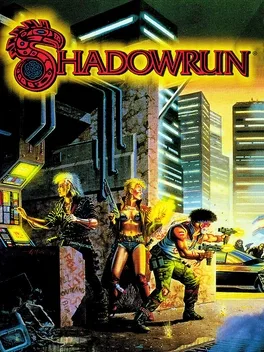
Shadowrun is an action role-playing game.It was adapted from the cyberpunk role-playing game Shadowrun.The game is the second video game adapted from Shadowrun, and has a more open ended style of gameplay than its 1993 Super NES counterpart, Shadowrun by Beam Software. The game is set in the Shadowrun universe, in the 2050s. A time where the blending of technology and human flesh is common; it is around the time the Matrix, a huge computer network, came online, with the ability to jack into its cyberspace directly. It was also a time of magic renewal: a phenomenon known as The Awakening occurred, where magic returned into the world. Sorcery was once again possible, and slowly and seemingly at random humans began to mutate into orcs, dwarves, elves or trolls. This time of upheaval was not without political conflicts: mega-corporations began to control the world. But with their magic, native shamans threatened them and the world geography came to a complete change. The Amerindians and Elves reclaimed an area called Salish-Shidhe, close to the free city of Seattle, a major city in the newly formed United Canadian and American States.
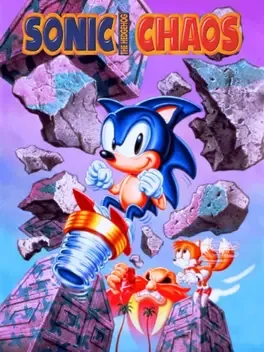
Dr. Robotnik has stolen the Red Chaos Emerald, causing the other five to "lose balance" and scatter themselves into a parallel universe. As a result of the instability, South Island is now sinking into the ocean. It is up to Sonic and Tails to find the Chaos Emeralds and restore harmony to the universe, or else the innocent residents of South Island will find themselves taking a long swim.
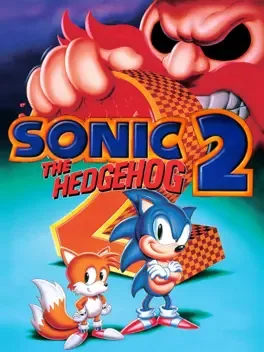
Dr. Eggman (aka Dr. Robotnik) has returned, turning helpless animals into robots and forcing them to build his ultimate weapon, the Death Egg! But this time, Sonic has a friend that can help him: Tails! Find the 7 Chaos Emeralds and stop Dr. Robotnik’s evil scheme!
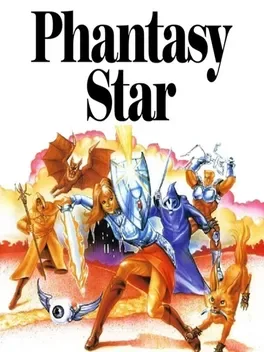
The time: Space Century 3240. The place: The Algol Star System. It began when King Lassic turned evil and let hordes of hideous, magical creatures run amok on the three planets. When her brother was killed, Alis vowed to avenge his death and put an end to Lassic forever. Join her in a journey across time and space to worlds where creatures speak...where magic and science combine to take you on the ultimate video quest. Phantasy Star is total adventure role playing with towns full of people and shops...16 level dungeons full of traps and treasure...three companions who will help you if you find them and some of the most awesome graphics ever put in a video game.

Street Fighter II: Champion Edition is a competitive fighting game released for the arcades by Capcom in 1992. It was the first of several updated versions of the original Street Fighter II: The World Warrior. The main changes consisted of the addition of the Grand Masters (the final four computer-controlled opponents in the single-player mode) as playable characters and mirror matches (same character vs. matches). The fighting techniques of the eight main characters from the original game were also further refined to allowed for more balanced competitive play. Champion Edition was followed by Street Fighter II' Turbo: Hyper Fighting, released several months later.
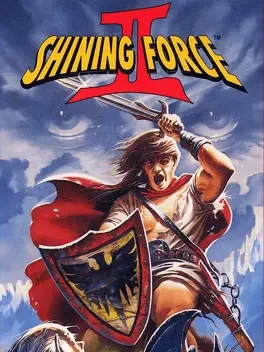
As a student of Astral the wizard, you and your friends study all the usual subjects: reading, writing, and sword fighting. As your time at school draws to an end, dark events are taking place on the island of Grans. The two Jewels which seal the Door to Darkness have been stolen, allowing a creature of awesome power to be unleashed. Finding where the Jewels were taken, and why, is a task only the bravest of adventurers can undertake.
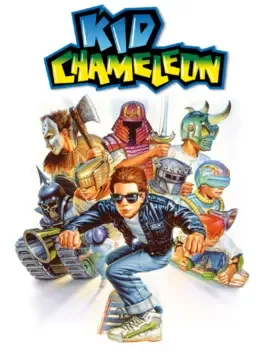
Kid Chameleon is a 1992 platform game released for the Sega Genesis/Mega Drive. The premise of the game is that the main character, Casey, can use masks to change into different characters in order to use different abilities. It was later released in Japan as Chameleon Kid. The game is also a part of the Sega Genesis Collection for the PlayStation 2 and PlayStation Portable. It was released for the Virtual Console in Japan on May 22, 2007; North America on May 28, 2007; and Europe on June 1, 2007. It was also released in addition to a series of other Sega games, including Shining Force and Comix Zone, in Sega Smash Pack 2. The game has also appeared in Sonic's Ultimate Genesis Collection for Xbox 360 and PlayStation 3.
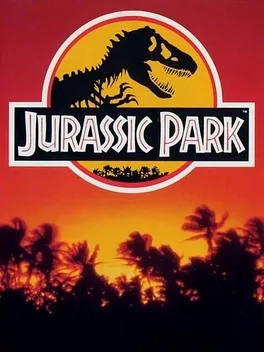
Jurassic Park is a SEGA Genesis/Mega Drive game based on the first movie. The game was playable as either Dr. Alan Grant or a Velociraptor (presumably the The Big One). Grant is the default character but can be changed using the 'Player' option on the game's main menu to swich to the raptor.
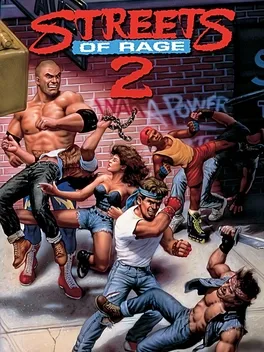
Mr. X and the Syndicate are back, this time taking Adam hostage! Take on the role of Axel, Blaze, Skate, or Max to rescue Adam, and destroy Mr. X once and for all.
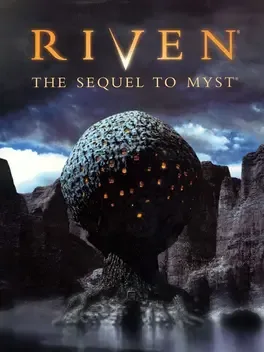
Prepare to enter a world "torn asunder" by timeless, unresolved conflicts--a world of incomparable beauty, intrigue, and betrayal. Prepare to go to Riven. Journey through vast, awe-inspiring landscapes, where clouds sit nestled in a deep blue sky and the rolling sea waters shimmer from bright morning sunlight. But be forewarned: nothing is quite as it seems.
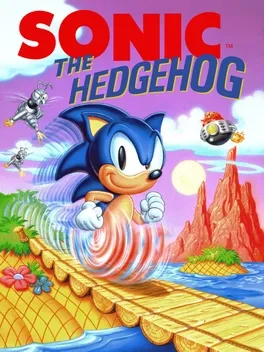
This is a completely different game than its 16-bit counterpart on the Genesis/Mega Drive, and was originally released on the Sega Game Gear and Master System. To stop the evil Dr. Robotnik, Sonic must traverse six zones consisting of three levels each. Most of the zones are based on those in the original game, but some are entirely new, including a jungle environment and a huge airship. Other unique differences are one level that scrolls automatically and one that is aligned vertically instead of horizontally. Most of the enemies (mechanized animals, defeated by Sonic's spikes when jumping or rolling) and power-ups (speed-ups, shields, extra lives) are the same as in the Genesis version as well. Sonic can pick up golden rings for protection (when hit, he simply loses all of his rings instead of a life) and bonuses: 100 rings gain Sonic an extra life, and 50 remaining rings at the end of a level allow access to pinball-themed special stages full of bumpers and springs. The final level of a zone is always a boss fight against Robotnik. Some of the boss fights differ in the Master System and Game Gear versions of the game, with special designs for the handheld version due to the smaller visible screen area. Sonic should also collect the six Chaos Emeralds to keep them from falling into Robotnik's hands. In a departure from the original game, these are not hidden in the special stages but somewhere in the regular levels.
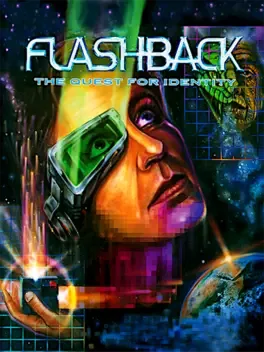
Throughout the 20th century, an unprecedented political and economic crisis afflicted Earth, leading to the systematic disabling of it's programme to conquer outer space through lack of funding. The highest priority now was to carryout research into new energy sources, preservation of the enviro- ment and maintenance of the cultural heritage. However, at the dawn of the 21st century, provision of considerable funds from an unknown source released by the politicians of the new, unified government, permitted a return to the space research programme. The conquest began gradually with the construction of huge, manned artificial satellites. Several lunar bases were created with the view to becoming future Earth colonies within the solar system. The considerable advancements made together with the supply of increasingly greater sums of money allowed man to explore, even as far as the planet Titan. You play the part of Conrad Hart, controlling his every move through the 6 levels of the game. During your quest, you will come across many different friends and foes whom you may wish to help or vanquish using your gun. you will have to complete many challenges in order to restore your lost memory. Each level features its own unique graphics and hazards, linked by cinematic animation sequences.
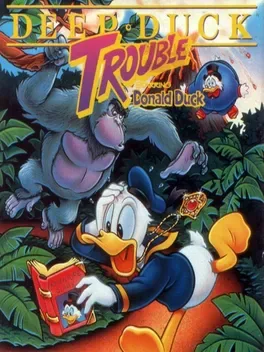
Uncle Scrooge found a magical necklace on a mysterious island, but the necklace put a curse on him. Now Uncle Scrooge is doomed to float around in the air forever! (Of course Donald always said Scrooge was full of hot air anyway!) To take the curse off Uncle Scrooge, Donald has to take the necklace back to the island. But there's plenty of danger awaiting Donald there. How about lending him a hand?